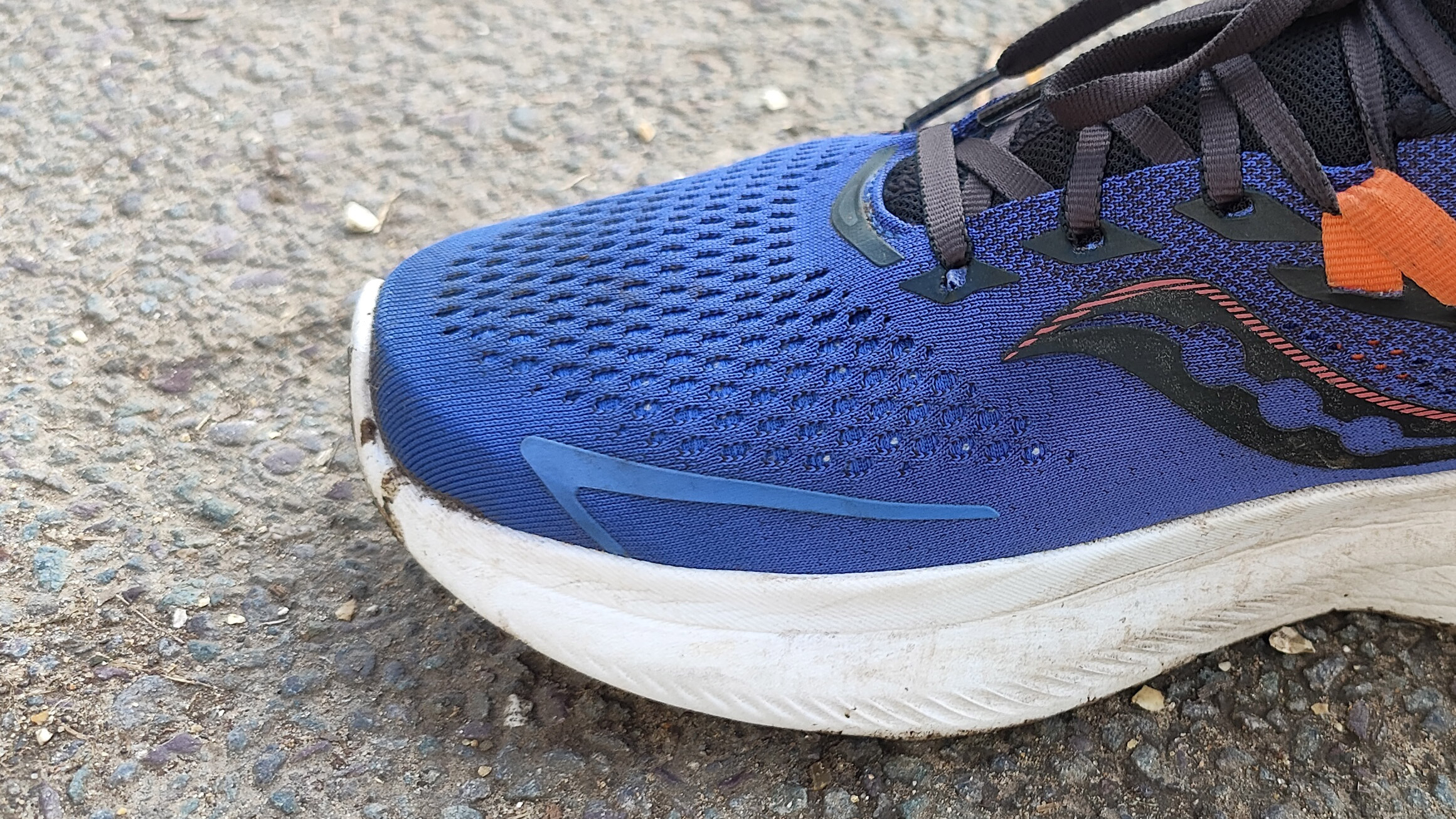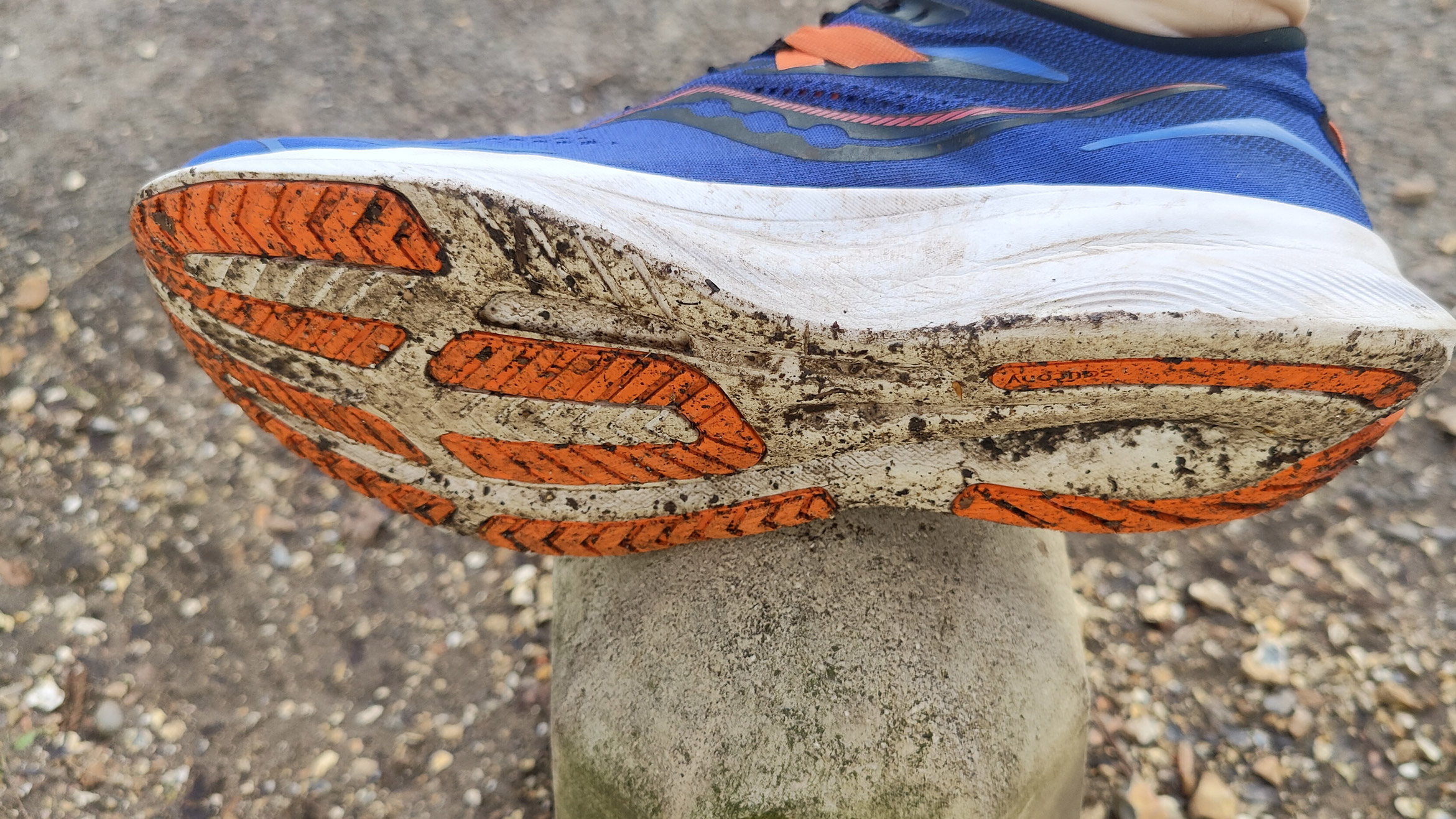Saucony Ride 15 review: A phenomenal everyday running shoe
I’ve had the Saucony Ride 15 for a few months, and they’ve been my go-to shoe when doing middle-distance training runs – which is pretty much all of my runs unless I’m going over 15-20 miles in a marathon training block, for which I’ll use my race-day shoes. They're definitely some of the best running shoes for me.
The Ride 15 is comfortable yet firm, with a good energy return from Saucony’s trademark PWRRUN foam outsole, and great for ‘neutral’ runners. This means that if you don’t roll your feet to the outside (overpronate) or inside (underpronate) too much when you run, you can’t go wrong with the Ride 15. It’s not quite as good on trails, as it’s designed for roads, and you can’t get the same return when running on softer ground, but it’s ideal for road running.
Although the Saucony Ride 16 is now available, the Ride 15 is still a perfectly viable option; you can now get it cheaper than the newer model, and it’s still a truly excellent running shoe. It’s my everyday shoe of choice, and hits the nail on the head in so many ways.
Saucony Ride 15: Specifications
Saucony Ride 15: Price and availability
The Saucony Ride 15 is available fairly cheaply now that the Ride 16 has been released. Originally priced at $140 / £130 / AU$220, it can now be found in all regions at discounted prices. We’ve seen it as low as $104.95 in the US from Saucony itself, £69.99 in the UK from SportsShoes.com, and AU$149.99 in Australia from the Athlete’s Foot.

Saucony Ride 15: Design
- Engineered mesh upper
- PWRRUN sole
- 8mm heel-to-toe drop
The construction of the shoe is excellent. Saucony claims its FORMFIT design addresses ‘every point of contact with your foot’, touching all of the foot at the same time. This means that, if you size it properly, it should pretty much perfectly conform to the shape of your foot. It’s good marketing, and perhaps one buzzword too many (the running-shoe industry is rife with designers trying to sound like they’ve reinvented the wheel), but the shoe fits well and is very comfortable.
Like most running shoes now, the mesh upper is breathable and comfortable, a little thicker than most meshes thanks to the inserted sleeve underneath the mesh itself. This sleeve doesn’t constrict the foot, nor does the extra layer contribute towards retaining any odor that I’ve been able to notice.
The midsole and outsole are made of EVA and PWRRUN foam, with strategically placed rubber strips either side of the heel and sole to distribute weight evenly. This is why the shoes are designed for neutral runners: both strips are designed to brace for impact, rather than leaning to one side or the other. In practice, those strips have held up very well, as you can see in the image below.

The result of all this is a solid, stable, neutral shoe with a good true-to-size fit that’s perfect for everyday runners. It’s worth noting that the heel-to-toe drop on this shoe is 8mm, so they’re significantly thicker than Saucony’s popular Kinvara range. If you like a minimalist or thinner running shoe, opt for the Kinvara over the Ride.
- Design score: 4.5/5
Saucony Ride 15: Performance
- Held up very well, and the shoe is very durable
- Excellent and very comfortable on all roads
- Not particularly suited for trails, but can handle hard ground
The shoe is extremely comfortable on the roads and feels firm and secure, with no rocking or instability. I never feel like I’m in danger of rolling my ankle on an errant misstep, as I do with some squishy shoes designed for a fast-paced run. These are workhorses.
The shoes offer good ‘energy return’, storing the potential energy in the sole of the shoe and releasing it as you lift your feet again, but they’re unlikely to make you much faster or give you an added spring to your step in the same way carbon-plated race-day shoes might. It’s simply a well-designed, well-cushioned shoe that will keep your foot stable, offer comfort on the road, and help conserve a little energy.
These are road-running shoes, so they’re not really designed for anything rougher than a park run trail, but they’ll see you through hard ground no problem. On softer, unstable surfaces they lose some of that energy return, and even though they’re fairly light you’ll definitely feel more sluggish than you would with slightly heavier shoes that are better suited to trail runs.
- Performance: 4/5
0 comments:
Post a Comment